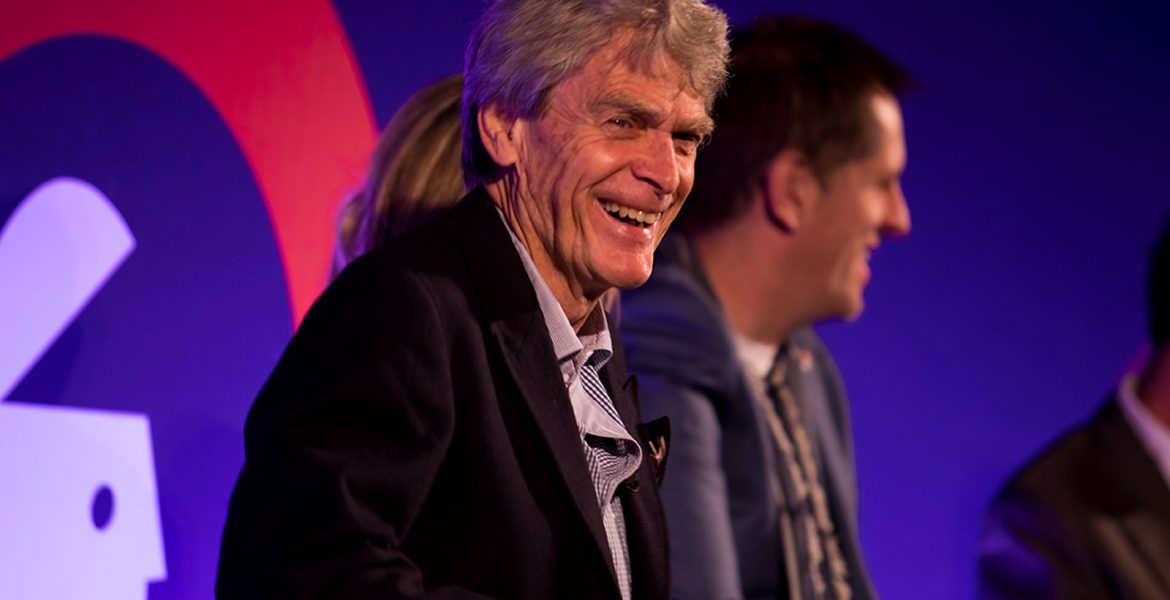A high-powered panel, hosted by Time Inc. UK and including Sir John Hegarty and senior figures from eBay, Domino’s Pizza and Karmarama, explored issues around brand building in digital and mobile channels as part of Advertising Week Europe, taking place in London this week
Artificial Intelligence and digital marketing are currently dominated by technologists, but it’s time for creatives to take back control of advertising and make it all about “creating desire” again, rather than about tricking people into watching content.
That was the argument made by ad industry guru Sir John Hegarty this morning during a Time Inc. UK-hosted panel discussion, entitled ‘Sorry, I didn’t mean to damage the brand, it was taken out of context’ at Advertising Week Europe in London. The panel had been invited to discuss the hot topic of whether context was more important than content in today’s digitally-driven media landscape.

The moderator was Time Inc. UK’s Strategic Business Development Director Dan Coleman, and sitting alongside Sir John, currently founder and creative director of ad agency The Garage and one of the founders of iconic ad agency Bartle Bogle Hegarty (BBH), were Rob Bassett, EU Director, Revenue Labs at eBay; Tony Holdway, Sales & Marketing Director of Domino’s Pizza Group plc; Charlotte Moore, Digital Content Director of Marie Claire, InStyle and Look; and Jon Wilkins, Executive Chairman of Karmarama.
One of the main topics for discussion was mobile advertising and marketing, and Hegarty dismissed the idea that all marketing should now be ‘mobile first’. He argued that it should be ‘idea first’ – and that this central idea should be “valuable; make it something people want.”

He lamented that “we’ve forgotten the idea of creating desire” in consumers. Instead, he said, “we seem to be saying that the answer is to trip them up, con them into watching something. I didn’t come into advertising to do that, I didn’t come into advertising to con people. I came into advertising hopefully to inspire people. That’s what we should be talking about – the rest of it is just crap.”
John Wilkins of Karmarama agreed that the creative idea was paramount but pointed out that too many marketers are simply applying that idea across the board, without taking into account the channel and the context it appears in and adapting messaging accordingly.
He cited research which shows that consumers’ responses can be completely different to the exact same content, depending on the channel they see it in: while they like the ad in a magazine or on the telly, “they are repulsed by the ad in a personal format [e.g. on a mobile phone]…”

He added: “You do see a lot of brands that are quite lazy. They just run their TV ads on YouTube and mobile formats and they wonder why people hate them. I’ve been in focus groups where people say ‘that pisses me off because it’s on my phone. My phone’s for me – this is where I communicate with my friends and I want stuff quickly – I don’t want things that slow me down.’”
Tony Holdway of Domino’s reinforced the point that when it comes to mobile marketing, understanding what consumers want to be able to do via their phones, and that they don’t want intrusive advertising cluttering up their devices, is vital. “You’ve certainly got to make stuff simpler and easier and slicker… start with mobile first because that’s where your customers are and in my case where most of our sales are. You’ve got to make that the best experience for the customer – and for them that probably involves getting to the checkout as quickly as possible.”

eBay’s Rob Bassett warned that mobile marketing was only going to get more complicated due to the regulatory framework, not just because of GDPR but also with new EU rules on ePrivacy likely to have an impact on the channel. He also stressed that the ‘social contract’ between the consumer and the marketer was different on mobile because “when you serve something to someone on mobile, they are mostly paying for it… the screen is small and bandwidth is still not as good as possible.” Branding on mobile may have to wait for technology to improve before it can be as effective as via other channels, he suggested.

